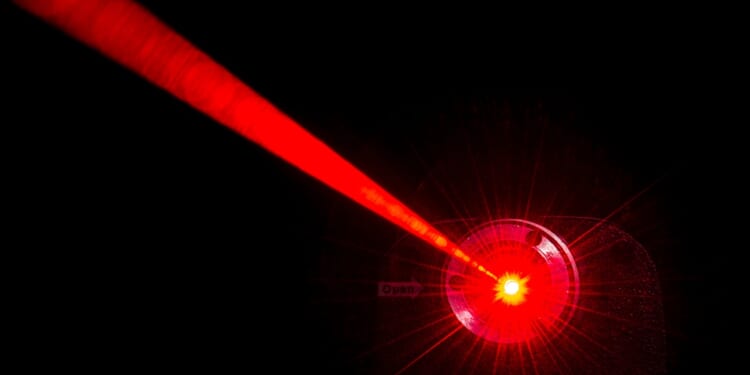After having successfully demonstrated that it has a working railgun, Japan has been working feverishly on what it refers to as the “Vehicle-Mounted High-Power Laser Demonstration System,” a prototype for a directed energy weapon (DEW) developed under its Acquisition, Technology and Logistics Agency with Mitsubishi Heavy Industries.
The laser has reportedly destroyed small drones in tests, and is being prepared for integration with other Japanese Self-Defense Force (JSDF) systems, including high-powered countermeasures. The project is intended to be vehicle-mounted and can potentially be scaled or fitted to other platforms.
DEWs are sought after especially as counter-drone systems. The Ukraine War has demonstrated the importance of countering drones. and militaries the world over have sought different methods for achieving defense against these pesky unmanned systems. Japan’s DEW could theoretically “cook” an enemy drone—or, preferably, a swarm of drones—out of the sky by frying the electronics of those drones.
Understanding Japan’s New Laser Weapon
Japan’s demonstrator has logged successful drone kills earlier this month during tests and is designed to operate continuously. The next step is linking the system into wider JSDF air defense and Counter-Unmanned Aerial Systems (C-UAS) architectures. There are further plans to develop even larger lasers capable of engaging missiles. The Vehicle-Mounted High-Powered Laser Demonstration System is merely a proof of concept.
Thus far, it has proven itself to be very effective.
Once mature, DEWs can engage many low-cost targets—drones and loitering munitions—for the cost of electricity and cooling, a massive advantage against proliferating drone threats we see all over the world’s hotspots today. That changes defensive economics and force posture considerably. Vehicle-mounted DEWs, distributed across bases and units, increase the layers adversaries must penetrate with their offensive drones—shifting the calculus for any state testing Japan’s airspace.
Japan’s development of DEWs with major domestic primes signals indigenous capability growth and gives partners (US, regional allies) a tested hub for experiments and doctrine—increasing Japan’s strategic value.
Of course, laser weapons remain highly experimental. Cooling, power generation, beam control, and weather sensitivity are real complications for the scalability of this weapon. Fielding effective, mobile DEWs at scale is a serious issue. The Americans have failed to achieve their own DEW ambitions, leaving it to allied states, such as Japan (much as Washington is coming to rely on Japan to develop railguns and Australia to help with the creation of hypersonic weapons).
And there are operational limits beyond the fact that this is a highly experimental weapon system. Lasers are line-of-sight weapons that are affected by dust, rain, fog, and countermeasures. These weapons are meant to augment, rather than replace, existing conventional air defenses.
What’s more, these weapons are designed to enhance deterrence and defense. But any capability that threatens an enemy’s intelligence, surveillance, and reconnaissance (ISR) or strike assets could be framed as offensive, provoking diplomatic or military friction unless carefully postured.
Laser Weapons Are a Better Way Forward Against China
As always, this promising technology is too early in its development and, therefore, mismatched to the current moment in geopolitics. After all, China is ready to fight now—not in five years (or more), when this DEW will be ready to fight China.
Still, Japan’s DEW program is a shift in how defense is done in the modern age. This weapon isn’t magic, but it is strategic—and strategies change how wars start and are fought. There must be a major effort of investment to scale this technology so that it can become an effective deterrent soon against Chinese drones and missiles.
About the Author: Brandon J. Weichert
Brandon J. Weichert is a senior national security editor at The National Interest. Recently, Weichert became the host of The National Security Hour on America Outloud News and iHeartRadio, where he discusses national security policy every Wednesday at 8pm Eastern. He is also a contributor at Popular Mechanics and has consulted regularly with various government institutions and private organizations on geopolitical issues. Weichert’s writings have appeared in multiple publications, including The Washington Times, National Review, The American Spectator, MSN, The Asia Times, and others. His books include Winning Space: How America Remains a Superpower, Biohacked: China’s Race to Control Life, and The Shadow War: Iran’s Quest for Supremacy. His newest book, A Disaster of Our Own Making: How the West Lost Ukraine is available for purchase wherever books are sold. He can be followed via Twitter @WeTheBrandon.
Image: Shutterstock / Doug McLean.
















